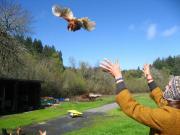Strategic Design is not enough - we need some form of metadesign
Collaborative synergy, driven by altruistic strategies, may not transform the world - safely - at the level of lifestyle.
In 2005 our Design Synergy 21 research looked at the idea of metadesign.
Prof. Karen Blincoe reflected upon the general idea of metadesign.
Prof. Naomi Gornick thought about education for metadesigners.
Dr. Elisa Giaccardi wrote a paper on the Co-Creation within Metadesign.
She quoted Roy Ascott (1994) as saying that, where design (loosely) is a planning process, metadesign is more like a 'seeding process’.
We envisaged that Metadesign teams would work as systems integrators (c.f. Galloway and Rabinowitz, 1983) in order to orchestrate events.
The process would need to be bottom-up, holarchic, self-creative, and aware of its own emergence, etc etc
But an organism would be unable to meet the above criteria unless it can operate at a 'meta' level.
An insect is unable to re-design (consciously) its working practices because (presumeably) it has no strategic overview of itself or its species.
Similarly, it would be unlikely for a highly specialised designer to invent a problem-solving solution that falls far outside its professional boundaries.
Metadesign augments Open Design and Strategic Design by emphasising certain relations in an explicit way.
Many teams may believe their collaboration is successful, even though they do not acknowledge, or respond to, the emergent outcomes of their endeavours.
E.g. Open Source movement merely focuses on managerial synergy as a means of improving industrial efficiency.
By contrast, the Free Software movement also works at this level, but is also mindful of synergies at a higher social (e.g. altruistic) level.
The Greek word ‘meta’ originally meant ‘beside’ or ‘after’.
It now also implies change or transformation.
It can therefore mean beyond
Casa Robino
Shared Hospitality Excavations
Attainable Utopias : Metadesign
Fri, 30/03/2012 - 05:02 by dante
»
- Login to post comments
